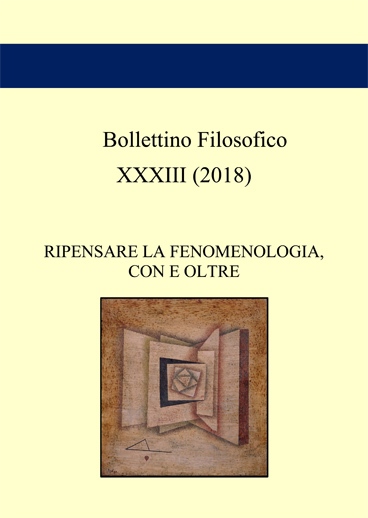Come la fenomenologia diventò faneroscopia: il progetto di Peirce di una “Filosofia Suprema”
Abstract
Charles Sanders Peirce (1839-1914) worked in the latest years of the XIX century on a classification of sciences that included phenomenology, beside metaphysics and normative sciences. He wanted these triadically distinct in esthetics, ethics and logic. This vision of phenomenology is clearly different from Husserl’s. Nonetheless, there are some analogies. First of all, the idea that phenomenology has to deal with what is present to the mind in any moment and in any sense. For Peirce this presence is triadically said: as Firstness, Secondness and Thirdness. It is the presence of an experience, plus its interpretation. It is a Third, that is, a signification, that bridges the divide between a First and a Second, the pure quality and the pure given of the experience itself. This leads us to underline the differences between the two phenomenologies. It is not by chance that Peirce begins, in the first years of the new century, to call it “phaneroscopy”, from the greek word “phaneron” and to appeal to an “High Philosophy” as its fulfillment. If Husserl’s theory is grounded on the principle of evidence, Peirce opposes to it the force of inference; if Husserl appeals to intuition, Peirce denies it any legitimacy, referring to triadic relations of signs (semiosis) as the leading-principle of reasoning and certainty. The beginning of our philosophical experience is not the pure and undoubtable apprehension of the thing itself, but the sign relation that mediates between a sign, an object and its Interpretant. This relation is eminently fallible and dynamically ever-changing.
Downloads
Bollettino Filosofico pubblica in internet, ad accesso aperto, con licenza:
|
|
CCPL Creative Commons Attribution |
L'autore conserva il copyright sul suo contributo, consentendo tuttavia a chiunque "di riprodurre, distribuire, comunicare al pubblico, esporre in pubblico, rappresentare, eseguire e recitare l'opera", purché siano correttamente citati l'autore e il titolo della rivista. L’autore, al momento della proposta di pubblicazione, è inoltre tenuto a dichiarare che il contenuto e l’organizzazione dell’opera è originale e non compromette in alcun modo i diritti di terzi, né gli obblighi connessi alla salvaguardia di diritti morali ed economici di altri autori o di altri aventi diritto, sia per testi, immagini, foto, tabelle, sia per altre parti di cui il contributo può essere composto. L’autore dichiara altresì di essere a conoscenza delle sanzioni previste dal codice penale e dalle leggi speciali per l’ipotesi di falsità in atti ed uso di atti falsi, e che pertanto Bollettino Filosofico è esente da qualsiasi responsabilità di qualsivoglia natura, civile, amministrativa o penale, e sarà dall'autore tenuta indenne da qualsiasi richiesta o rivendicazione da parte di terzi.
